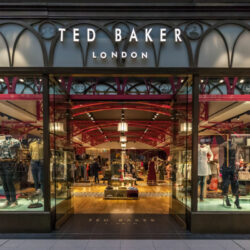There’s no secret that the number of retailers launching restaurants. cafes or eateries in-store is becoming more common. It’s seen as a viable way to extend a retailer’s brand and provide another revenue stream for the business.
Shoppers who visited Debenhams stores from September this year may have come across fish and chip restaurant Harry Ramsdens, while shoppers at Next can sit down to a cup of coffee at an in-store Costa or at Bear cafes when shopping at Jack Wills.
Last month, Swedish clothing giant H&M launched its first hyper-local flagship in Berlin which included a cafe with a garden, and closer to home, Primark included a Disney-themed café, plus a Primarket Café in its massive new flagship in Birmingham.
While department stores and book shops such as Waterstones popularised the in-store cafe or eatery, it is increasingly common for many retailers to include a convenient café concession for their shoppers within their large stores.

It’s arguable that in-store restaurants or cafes may just be the key to defying the mounting bad news for brick-and-mortar retail. Phil Hails-Smith, corporate and commercial partner at law firm Joelson, said that when executed correctly, these partnerships can be “a win-win” for both retailers and food businesses, providing greater exposure, increasing footfall and generating higher revenue.
“However, retailers and restaurants venturing into partnerships must ensure they are making solid business choices and are compatible in terms of goals and business values to avoid any unfortunate clashes,” he told Retail Gazette.
He also said it was advisable retailers collaborate with a hospitality company that offered a different set of strengths and a different client base.
However, Jurgen Ketel, managing director EMEA of brand loyalty firm Givex, said in-store eateries would only work successfully if it had same target audience, equivalent pricing and similar expansion plans to the retailer with which it is partnered.
“Offering an in-store restaurant can increase the chances of bringing customers in”
Nottingham Business School research associate Nelson Blackley said retailers were at an advantage if they can make an in-store dining experience “relevant” to whatever they sell. He added that alternatively, they could “take the same attributes, characteristics, and ethos of their retail brand and apply them to the food offering”.
“This makes a powerful combination,” Blackley told Retail Gazette.
“A great example of executing this brilliantly is Ikea, whose restaurant food in its UK stores reflects the Swedish heritage of the brand.”
Undoubtedly, offering an in-store restaurant can increase the chances of bringing customers in, especially new customers. In addition, it could increase brand loyalty and reverse the damage some retailers have endured during the challenging times of late.
Ketel said an in-store restaurant worked because “it keeps shoppers on-site for longer”.
“If the restaurant is popular, diners will likely end up browsing the store before or after eating,” he said.

Meanwhile, having an in-store eatery means retailers are able to share parts of the rent bill, an added benefit considering today’s rising rent prices.
Blackley told Retail Gazette that the idea of incorporating food service into stores wasn’t anything “new”. From the late 19th century onwards, most department stores often included restaurants, which served both as meeting places, and a focused attraction for customers. One only needs to visit the flagship department stores in central London or other major cities to see this tradition is still very much alive.
However, in more recent years Blackley believes “retailers of all kinds are now increasingly turning to restaurants both to attract shoppers and keep them in their store longer”. Even high-end retailers like Burberry are offering them.
“It’s also a productive way to fill available store space no longer needed for product and an in-store café, or restaurant is also a really great way for a retailer to deliver on customer experience,” he said.
“They are becoming increasingly vital as retailers look to enliven the physical shopping experience with leisure pursuits in a digital age.”
Nevertheless, the relationship between retailers and restaurants has not always worked out. In 2013, when Tesco was under chief executive Philip Clarke, it acquired family restaurant chain Giraffe for £48.6 million. The Big 4 leader sought to create “retail destinations” for customers and to fill vacant store space created by categories now shopped for online, and to drive footfall. It also set up new company Tesco Family Dining to run wholly-owned carvery brand Decks.
“Retailers of all kinds are now increasingly turning to restaurants both to attract shoppers and keep them in their store longer”
However, just three years later, incoming chief executive Dave Lewis sold Giraffe for an undisclosed sum as he said the grocer would instead focus on revitalising Tesco’s core UK business.
In-store eateries come and go. But what’s different about the most recent wave is that it’s not just well-established retailers venturing out in these partnerships, it’s also single-location boutiques and independent retailers.
Retail restaurants and cafes may be like any other, except they’re in a store, but they don’t carry the same risks. They have a guaranteed space, a steady stream of customers and an ulterior motive: to persuade customers to spend their money.
Click here to sign up to Retail Gazette’s free daily email newsletter


















